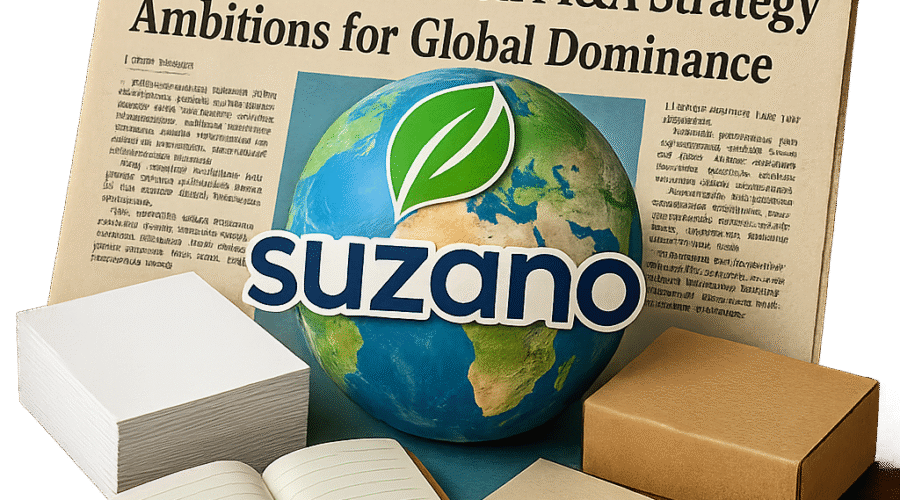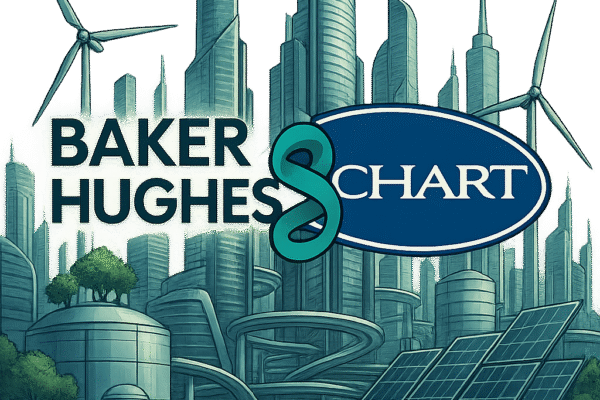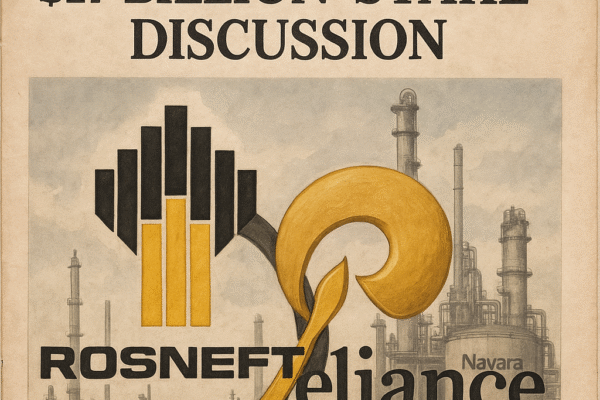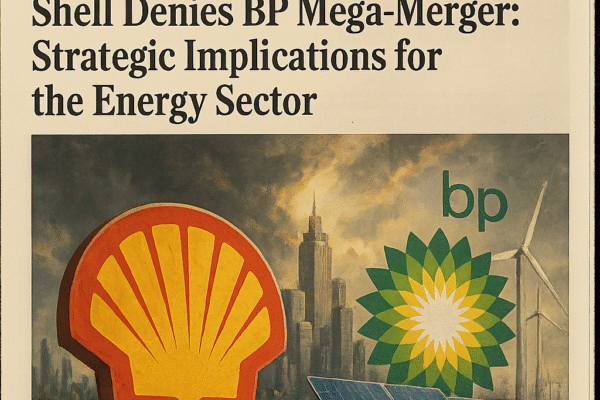In a bold move signaling renewed corporate ambition, Brazilian pulp titan Suzano has unveiled plans to deploy $3 billion toward strategic mergers and acquisitions across packaging, tissue, and emerging biomaterial markets. The announcement from CEO Beto Abreu comes just eight months after the company’s $110 million acquisition of critical U.S. production assets and follows a failed $15 billion bid for International Paper. This report analyzes how Suzano’s calculated expansion strategy combines vertical integration with geographic diversification, positioning the São Paulo-based firm to capitalize on global shifts toward sustainable packaging while navigating complex macroeconomic headwinds.
Strategic Vision Behind the $3 Billion War Chest
From Commodity Producer to Integrated Solutions Provider
Suzano’s transformation from a traditional pulp exporter to an integrated biomaterials conglomerate accelerated dramatically with CEO Beto Abreu’s May 2025 announcement of $3 billion in planned M&A activity[1][2]. The strategic pivot addresses multiple market pressures simultaneously: declining pulp prices projected through 2025[11], rising demand for plastic alternatives in packaging, and shifting trade patterns in Asian markets. By acquiring capabilities in higher-margin downstream products like liquid packaging board and cupstock, Suzano aims to capture more value from its 11 million metric tons of annual pulp production capacity[3][12].
Geographic Rebalancing Act
The company’s October 2024 acquisition of Pactiv Evergreen’s Pine Bluff and Waynesville facilities marked a decisive shift toward developed markets, with North America now accounting for 18% of Suzano’s production capacity[3][4]. This $110 million deal provided immediate access to the U.S. food service packaging market while establishing critical infrastructure for future expansion. Analysts note the Arkansas and North Carolina facilities’ proximity to Southern pine forests creates a 15-20% cost advantage versus Midwest competitors[5], a structural benefit that could support margin expansion as Suzano implements its operational turnaround plans.
Recent Transactions and Integration Challenges
Pactiv Evergreen Asset Integration
Initial operational data from the acquired U.S. mills reveals both promise and challenges. While the Waynesville facility achieved 92% utilization rates within six months of takeover, the 1950s-era Pine Bluff mill required $28 million in immediate maintenance investments to address deferred upkeep[5]. Suzano’s decision to retain 87% of former Pactiv employees helped maintain institutional knowledge but complicated the implementation of lean manufacturing practices. The company’s long-term supply agreement with Pactiv Evergreen ensures baseline demand for 65% of the mills’ output through 2028[4], providing cash flow stability during the transition period.
Failed International Paper Bid
Suzano’s aborted $15 billion offer for International Paper in May 2024 exposed both the company’s global ambitions and the limits of its balance sheet[8]. The proposed acquisition would have instantly made Suzano the world’s third-largest packaging producer but carried significant integration risks given IP’s $8.2 billion in net debt and declining fluff pulp margins. Market reaction to the deal speculation triggered a 7.4% drop in Suzano’s ADR price[12], underscoring investor concerns about overextension in non-core markets.
Sector-Specific Acquisition Targets
Packaging: The $214 Billion Opportunity
With the global sustainable packaging market projected to grow at 6.8% CAGR through 2030, Suzano’s M&A team has prioritized liquid packaging board (LPB) and molded fiber solutions. The company’s December 2024 exploration of Clearwater Paper illustrates this focus – a potential $410 million acquisition would add 580,000 tons of food service packaging capacity and direct access to QSR chains like McDonald’s and Starbucks[6]. However, antitrust concerns in the North American LPB market, where Suzano already controls 22% of supply through its Pactiv assets[5], could complicate regulatory approval.
Biomaterials: Beyond the Pulp Paradigm
Suzano’s 15% stake in Lenzing AG positions the company at the forefront of textile fiber innovation, with options to acquire controlling interest in the Austrian viscose producer by 2026[6]. This $780 million investment provides access to closed-loop production technologies that could reduce water usage in textile manufacturing by 40%[6]. The move aligns with Suzano’s “2030 Renewability Agenda” which targets 50% of revenues from non-traditional pulp products within six years.
Financial Engineering and Risk Management
Balance Sheet Constraints
Despite posting record Q3 2024 revenue of $2.16 billion[5], Suzano’s debt profile remains a concern for rating agencies. The company’s net debt/EBITDA ratio of 3.2x[12] leaves limited room for large-scale acquisitions without equity dilution. CFO Marcelo Bacci has emphasized that future deals will prioritize asset-light partnerships over outright purchases, with the $3 billion M&A budget including joint venture formations and minority stakes[2][9].
Currency Hedging Strategies
With 68% of revenues USD-denominated but 85% of costs in BRL[12], Suzano’s treasury team has implemented sophisticated forex hedging instruments to protect acquisition firepower. The company’s 2025 derivative portfolio includes $1.2 billion in USD/BRL put options struck at 5.15, effectively capping appreciation risk during the M&A window[13]. This strategy proved prescient as the real weakened to 5.42 per dollar following Brazil’s Q1 2025 GDP contraction.
Industry Context and Competitive Landscape
Latin American Pulp Sector Consolidation
Suzano’s M&A push occurs amid broader consolidation in the global forestry products sector. Chilean competitor Arauco’s $2.1 billion acquisition of Klabin’s Paraná assets created a South American powerhouse controlling 19% of global market pulp capacity[11]. Meanwhile, International Paper’s pending merger with DS Smith threatens to squeeze Suzano’s European market share, necessitating the company’s recent partnership with Portugal’s Navigator Co[8][11].
Technological Disruption in Packaging
The rise of active intelligent packaging (AIP) technologies presents both opportunities and threats. Suzano’s R&D partnership with MIT’s AutoID Lab aims to develop cellulose-based RFID tags that could capture a $700 million niche market by 2027[14]. However, slower-than-expected adoption of compostable packaging in emerging markets continues to pressure margins, with Suzano’s Brazilian tissue division seeing 4.3% volume decline in Q1 2025[2].
Future Outlook and Strategic Implications
Short-Term Execution Priorities
With $1.4 billion of the $3 billion M&A budget allocated through 2026[1][9], Suzano’s immediate focus remains on optimizing its U.S. foothold. The company plans to commission a $185 million cupstock line at Pine Bluff in Q3 2025, targeting Starbucks’ phase-out of plastic lids[5]. Simultaneously, negotiations continue with European regulators to approve the Lenzing stake increase, a deal contingent on Suzano meeting strict carbon capture targets at its Brazilian mills[6].
Long-Term Market Positioning
By 2030, Suzano aims to transform from a bulk pulp supplier to a renewable materials solutions provider. The company’s venture capital arm, Suzano Ventures, has already invested $120 million in 14 early-stage biomaterial startups, including mycelium-based packaging and nanocellulose applications[14]. This ecosystem approach, combined with strategic M&A, could help Suzano achieve its goal of replacing 1% of global plastic consumption with cellulose alternatives by 2035[3][14].
Conclusion
Suzano’s aggressive M&A strategy represents a high-stakes bet on the convergence of sustainability trends and materials science innovation. While the $3 billion deployment carries execution risks – particularly in integrating culturally disparate operations across three continents – the company’s disciplined focus on vertical integration and renewable solutions positions it to lead the next wave of biomaterial adoption. As packaging giants like Amcor and WestRock scramble to deplasticize their portfolios, Suzano’s first-mover advantage in cellulose-based alternatives could redefine global supply chains for decades to come.
Sources
https://www.investing.com/news/stock-market-news/suzano-eyes-3-billion-in-merger-and-acquisition-opportunities-says-ceo-93CH-4037277, https://www.marketscreener.com/quote/stock/SUZANO-S-A-9970732/news/Brazil-s-Suzano-mulls-M-A-opportunities-totaling-3-billion-CEO-says-49898042/, https://www.suzano.com.br/news/suzano-completes-the-acquisition-of-two-u-s-industrial-facilities-from-pactiv-evergreen, https://www.businesswire.com/news/home/20241001061743/en/Suzano-Completes-the-Acquisition-of-Two-U.S.-Industrial-Facilities-from-Pactiv-Evergreen, https://www.packagingdive.com/news/suzano-united-states-pine-bluff-waynesville-mills/731173/, https://valorinternational.globo.com/business/news/2024/12/23/suzano-mulls-acquisition-to-expand-presence-in-us-packaging-market.ghtml, https://www.santander.com/en/press-room/santander-international-banking-conference/biographies/walter-schalka, https://www.packagingdive.com/news/suzano-proposal-acquire-international-paper-offer-15B/715379/, https://www.marketscreener.com/quote/stock/INTERNATIONAL-PAPER-COMPA-13095/news/Brazil-s-Suzano-mulls-M-A-opportunities-totaling-3-billion-CEO-says-49898206/, https://brazilcham.com/tag/ma/, https://www.spglobal.com/_assets/documents/ratings/research/101615192.pdf, https://www.investing.com/equities/suzano-papel-adr, https://brazilcham.com/tag/energy/, https://corporate.arcelormittal.com/media/upipeqnl/annual-report-2023.pdf, https://s201.q4cdn.com/761980458/files/doc_presentations/2022/09/2022.09.21-Itau-14th-Commodities-Conference.pdf





